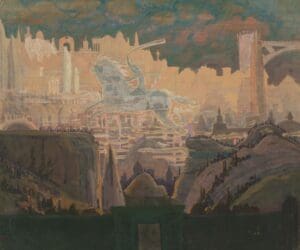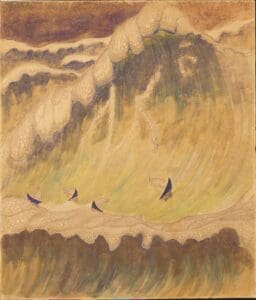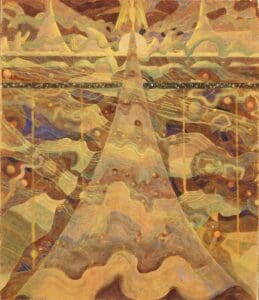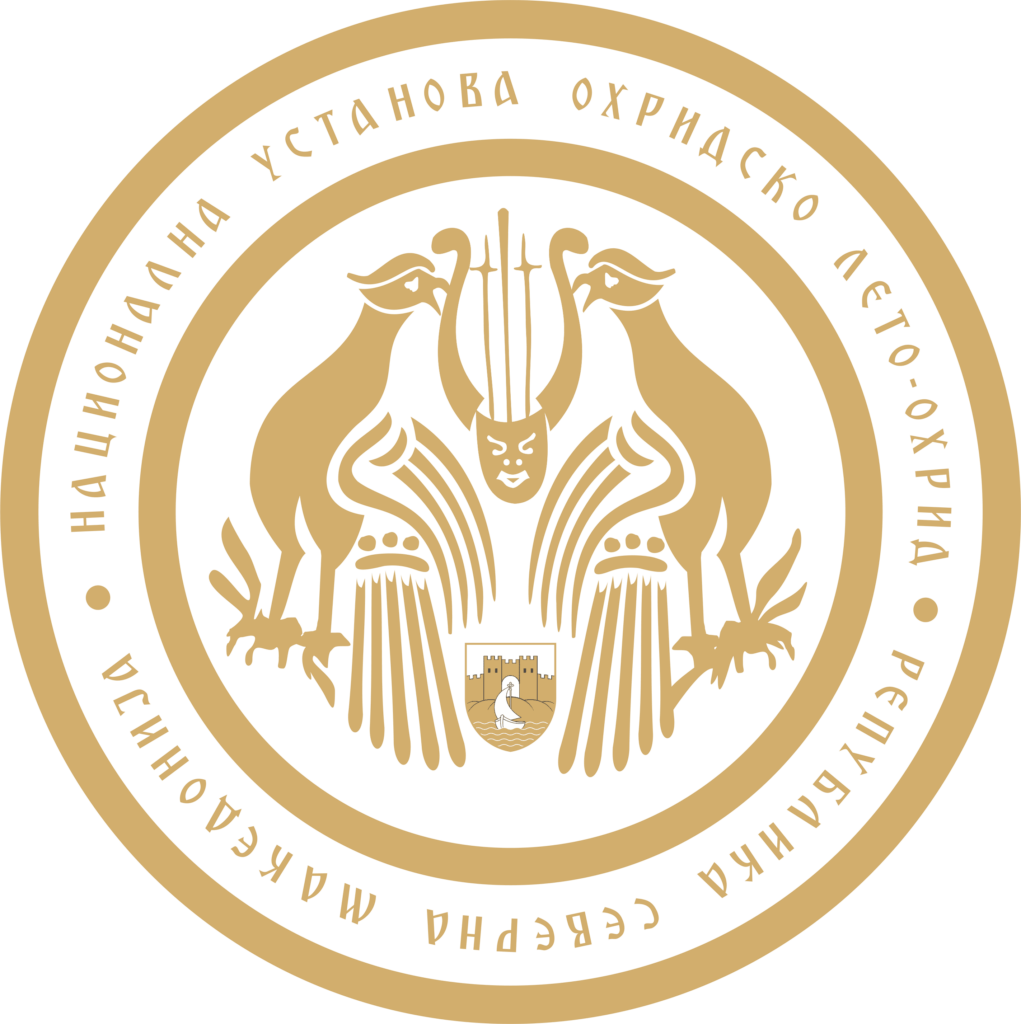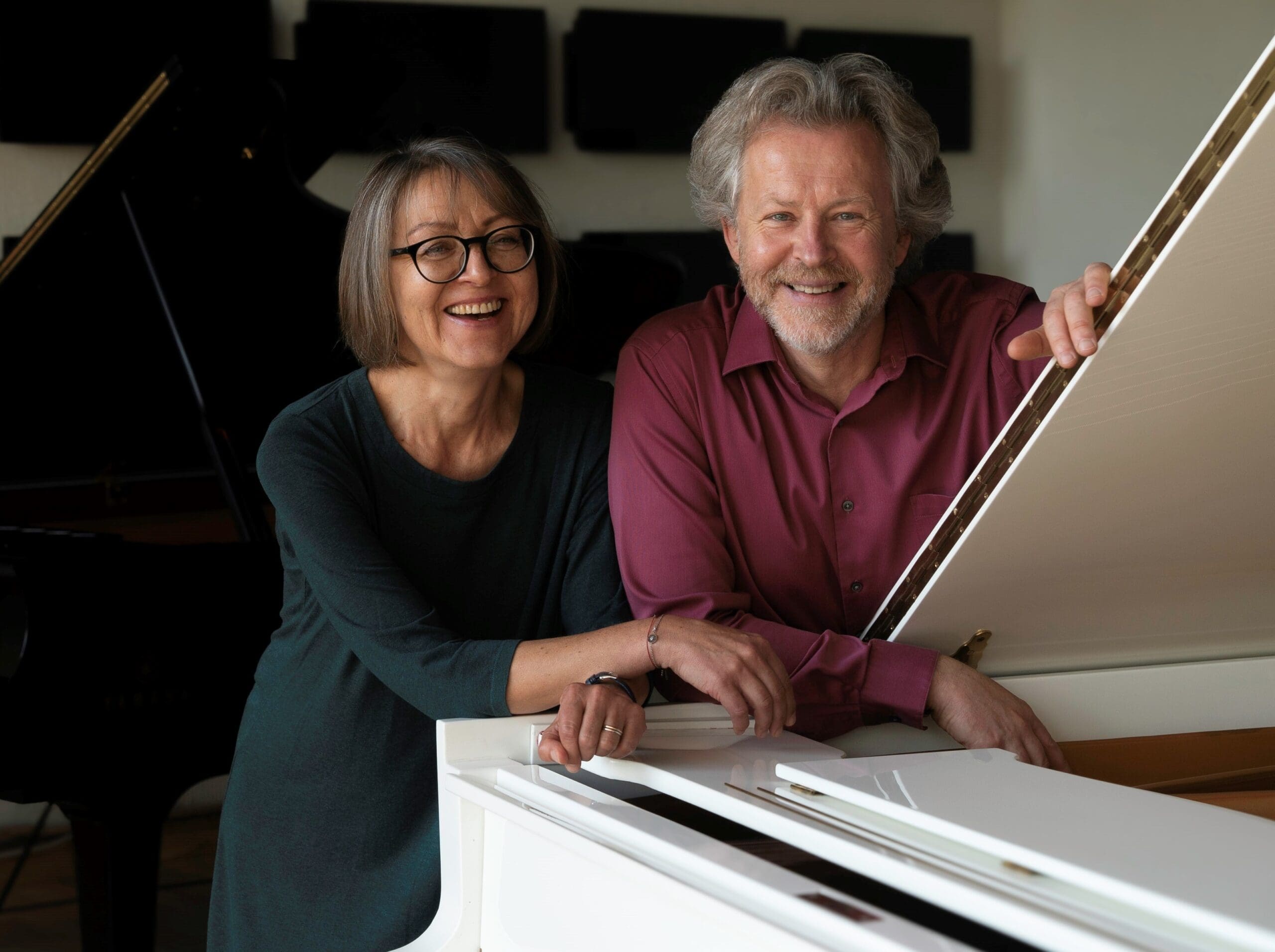
Lithuanian Evening of Music and Art; Piano Duo: Rokas Zubovas & Sonata Deveikytė-Zubovienė; Art Exhibition: Reproductions of Paintings by M.K. Čiurlionis
Lithuanian Evening of Music and Art
Piano Duo: Rokas Zubovas & Sonata Deveikytė-Zubovienė
Art Exhibition: Reproductions of Paintings by M.K. Čiurlionis
Pianists Sonata Deveikytė-Zubovienė and Rokas Zubovas started performing together in 1997. Both pianists, winners of international competitions, received music education in Lithuania (Lithuanian Academy of Music), Switzerland (Heinrich Neuhaus Institute, Zürich) and the USA (De Paul University, Chicago), where they studied under guidance of pianists Povilas Stravinskas, Jurgis Karnavičius, Esther Yellin, Andrius Kuprevičius, Edvard Auer and Dmitry Paperno.
Duo Zubovas has performed at the United Nations “Palace of Nations” in Geneve and Royal Pallace in Warsaw, appeared in international festivals in Lithuania, Norway, France, Italy, Germany, Netherlands, Ukraine, toured in South America (Argentine and Uruguay), North America (the USA and Canada), and throughout Europe. Besides performing the canon of repertoire for two pianos, Duo Zubovas’ special interest are works originally written for piano four hands by Mozart, Beethoven, Schubert, Schumann, Brahms, Reger, Debussy, Ravel, Faure, Rachmaninov, Corigliano, and others, as well as transcriptions for piano four hands of symphonic opuses including Stravinsky’s “The Rite of Spring”, Bach’s “Brandenburg Concertos”, Ravel’s “Spanish Rhapsody”, Debussy’s “Spring”, “The Sea”, Čiurlionis’ String quartet and Symphonic Poem “In the Forest”, works by Gershwin and others. The Duo performs with various symphony and chamber orchestras in Lithuania and abroad and has a number of works by Lithuanian composers dedicated to them.
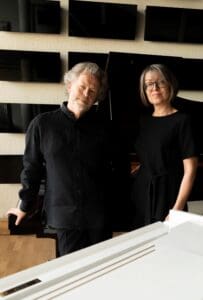
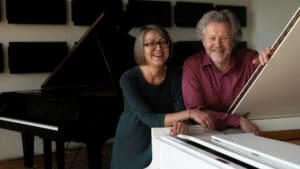
Programme:
Mikalojus Konstantinas Čiurlionis (1875-1911)
Four Lithuanian folk songs, adaptations for solo piano
Symphonic poem In The Forest, (1901) transcription for piano four hands
Variations Sefaa Esec
Symphonic poem The Sea, (1903-07) transcription for piano four hands
ČIURLIONIS. MUSICAL PAINTINGS
An exhibition of reproductions of paintings by Mikalojus Konstantinas Čiurlionis (1875–1911)
Mikalojus Konstantinas Čiurlionis (1875–1911), the most influential cultural figure of Lithuania, was a visionary composer and painter who left a profound legacy despite his tragically short life. His groundbreaking works, blending music and visual arts, continue to inspire and captivate audiences worldwide. Čiurlionis holds a unique place in European art and music history. As a pioneer of symbolism and modernist art, he introduced mystical and cosmic themes that resonated with the modernist movement across Europe. In music, he expanded the boundaries of harmony and structure, preceding the innovations of early 20th-century composers. His innovative approach to merging visual and sonic experiences positioned him among the leading avant-garde artists of his time, contributing significantly to the broader European artistic landscape.
In 1902, at the time of his enrolment at Kauzik‘s Drawing School in Warsaw at the age of 27, Čiurlionis was already an established composer, holding diplomas from conservatoires in Warsaw and Leipzig. His catalogue of works included several large-scale orchestral compositions—an overture, a symphony, and a tone poem—as well as a cantata for choir and orchestra, chamber music, choral works, organ pieces, and numerous piano compositions, including three sonatas, variation cycles, character pieces, and dances.
From his earliest paintings, dating from 1903–1904, one can perceive Čiurlionis’ inclination to enrich visual expression with musical elements. These early works often bore musical titles (Funeral Symphony), evoked sound (Rustling of the Forest), or suggested temporal flow, such as in the cycle The Day. Čiurlionis frequently thought as a composer while painting, creating symbolist landscapes imbued with sound and time. In The News, the viewer senses the first rays of morning sunlight breaking through misty forested hills. In Truth, a flickering candle and fluttering butterfly-angels—watched by a shadowed figure—create an atmosphere of resonant, haunting suspense.
In 1907, Čiurlionis began creating painting cycles based on the structure of the musical sonata. These unique and unparalleled cycles of visualised music fully integrate musical compositional techniques into a distinct visual language. Each panel, titled according to classical sonata movements (Allegro, Andante, Finale), reflects a clear sense of visual tempo and incorporates procedures such as thematic development, tonal contrast, and structured progression in line with musical forms of exposition, development, and recapitulation.
This exhibition invites viewers to explore Čiurlionis’ remarkable synthesis of sound and image—an artistic vision where paintings resonate like symphonies and silence speaks in harmony.
